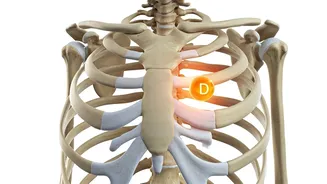Sunlight’s Misunderstood Role
Vitamin D, often called the 'sunshine vitamin,' is primarily produced by the body when exposed to sunlight. The prevailing understanding is that sunlight exposure
naturally boosts Vitamin D levels. However, several factors in India complicate this seemingly straightforward relationship. Traditional clothing, cultural practices, and the common avoidance of direct sun exposure during peak hours limit skin's ability to synthesize Vitamin D. Moreover, geographical factors such as air pollution can filter out the beneficial UVB rays required for vitamin D synthesis. The very climate, with its intense heat, pushes people indoors, reducing opportunities for natural vitamin D production. Understanding the interplay of these elements offers the initial step in addressing this widespread issue.
Dietary Deficiencies Uncovered
While sunlight remains crucial, diet constitutes another critical facet of Vitamin D status. Vitamin D is naturally present in few foods, with fatty fish like salmon and mackerel being notable sources. Furthermore, in India, the dietary habits often lack sufficient incorporation of these Vitamin D-rich foods. Vegetarian diets, common in the country, further limit natural sources. Fortified foods such as milk and breakfast cereals offer an alternative but aren't universally available or consistently consumed. This dietary insufficiency, combined with other factors, leads to insufficient vitamin D intake. Addressing this issue requires either the intake of vitamin-rich food, or through a strategic emphasis on food fortification, or through supplementation, highlighting a multi-faceted solution.
Lifestyle and Environmental Factors
Beyond sun exposure and diet, certain lifestyle choices and environmental conditions in India worsen the Vitamin D deficiency problem. Increased indoor lifestyles, promoted by both professional life and modern amenities, lead to decreased sun exposure. Air pollution, another major factor in several Indian cities, acts as a barrier, filtering out the UVB rays needed for Vitamin D synthesis. Furthermore, the types of clothing worn, particularly those covering the body, further limit the amount of skin exposed to sunlight. This intricate combination of lifestyle and environmental impacts establishes the complex context of the Vitamin D crisis in India. Recognising and changing these factors will be key in mitigating deficiency.
Unveiling Consequences and Solutions
Vitamin D deficiency is linked with various health consequences, encompassing bone weakness, reduced immunity, and a heightened risk of chronic diseases. Addressing the crisis requires a multifaceted approach. Increased awareness of Vitamin D's importance should be paired with lifestyle changes, for instance, spending brief periods in the sun. Dietary improvements such as the addition of Vitamin D-rich foods or fortified foods are crucial. Supplementation also plays a pivotal role in some cases, particularly for those at risk. Healthcare professionals must play their role by advising patients and initiating diagnostic tests, providing tailored solutions. Through a mix of proactive measures, Indians can positively influence their Vitamin D status, resulting in enhanced health and well-being.








